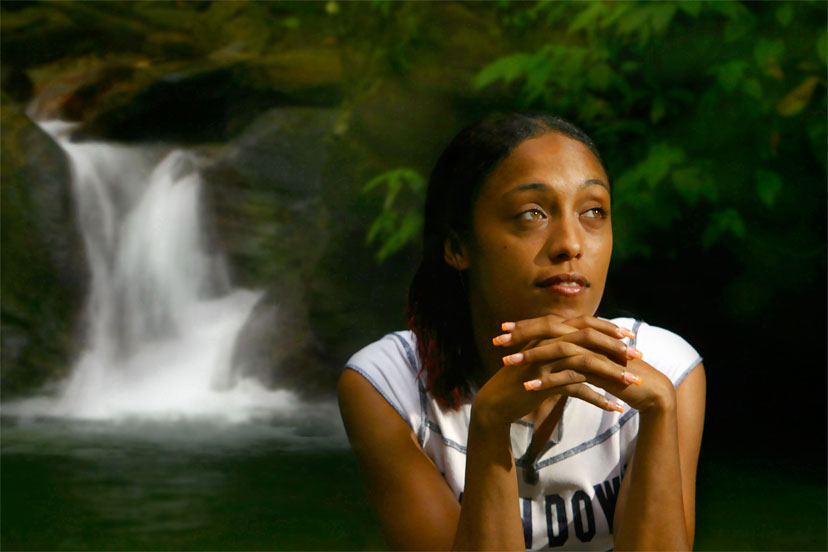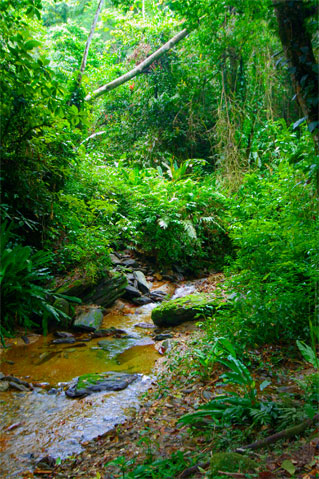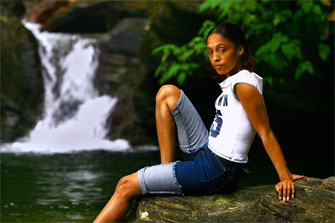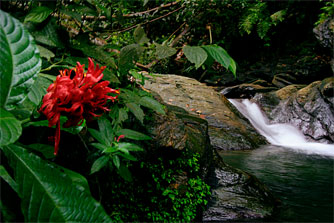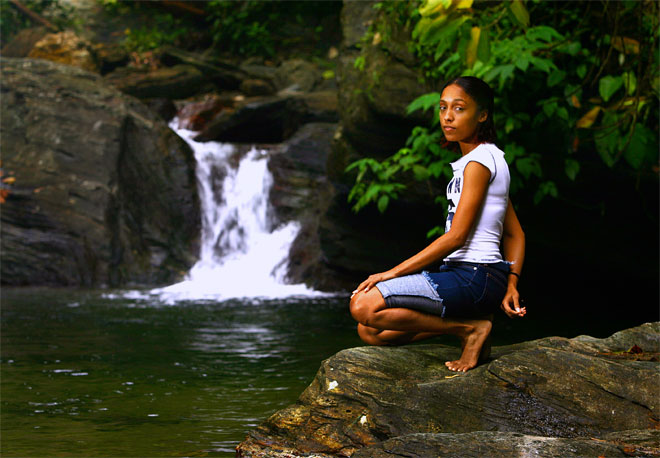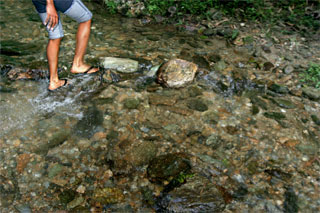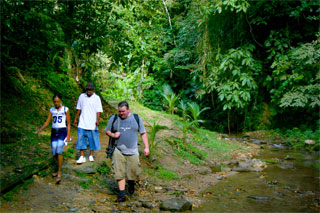
After a while we reached a small waterfall with a pond, that is sometimes used by the natives for fishing and relaxing. Rays of sunlight shone through the dense foliage and coloured the water and the riverbed. Our idea for this photo shoot was to combine the most beautiful things in Trinidad, in one picture. 24 year old Raquel has her daily work as a waitress in a restaurant in Chaguaramas, but she dreams about opening her own clothing shop sometime in the future. She was born and raised here. Like most other Trinidadians we have met, she is very proud of her country, and couldn’t even think of living somewhere else.
- We have rainforest, many different species of animals, beautiful beaches and friendly people. Even though Trinidad and Tobago is a third world country, it is also a very modern country in many ways. For example within the health sector and the industry. That in itself is a tourist attraction, she says to underveis.net. Ethnically, Raquel is a typical Trinidadian. She has some Indian blood, some African, and her grandfather was a European. In Trinidad these people are commonly referred to as redskins, meaning someone with a slightly lighter complexion than the average of the population.
Trinidad and Tobago is often referred to as the last undiscovered tourist pearl of the Caribbean, and there really aren’t many tourists around. Especially in Trinidad. The long beaches are practically void of people, only the local fishermen are mending their nets and discussing the days catch. No big and shiny hotels, no tourist buses and no hustle. In everything we do, we have a feeling that this wont last forever, and we have tried to gather as many impressions as we can from this little genuine island paradise before it goes away.

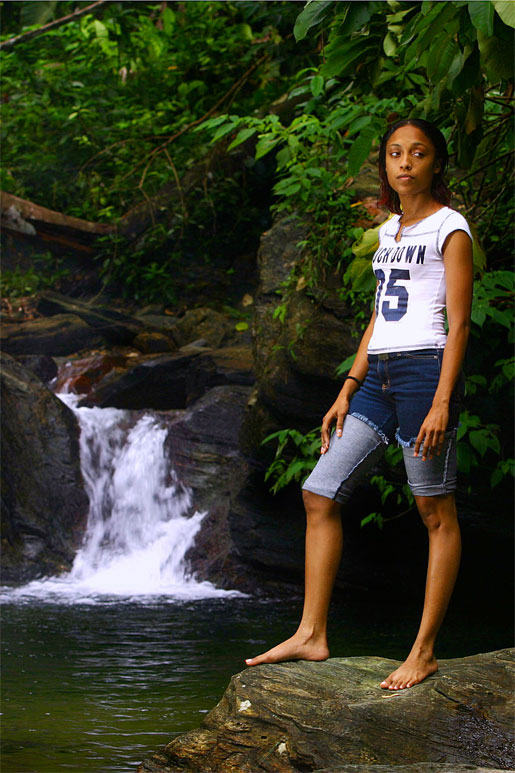
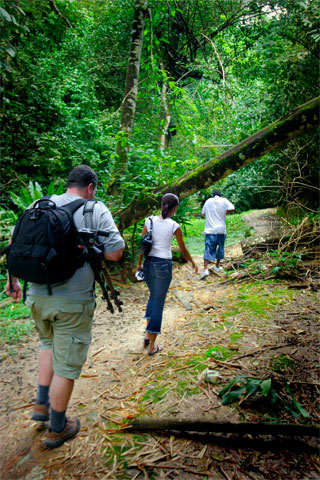
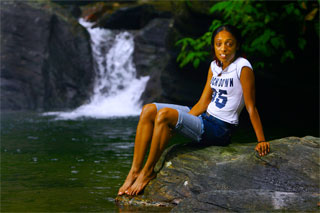
# The tropical rainforests encompass some of the most varied and species-rich ecosystems on earth. Originally, the tropical rainforest covered some 12 million km2, today between 7-8 million km2 remain. If the destruction of tropical rainforests continue with todays speed, practically all of it will be gone in 40 years.
# The rainforest in Trinidad and Tobago is considered some of the last completely untouched rainforest on the planet.
# South-America, with the Amazonas, Eastern Brazil, the West Indies and Latin-America comprises the largest rainforest area, and makes up around 57 per cent of the worlds total tropical rainforest.
# The climate in these regions is caracterized by: High temperatures, an annual average of 25 – 27 degrees centigrade. Lavish precipitation, frequent rainshowers: Minimum 2,000 mm a year, often more. Few seasonal variations, the climate remains the same all year around. Soil: Poor laterite earth. Rapid transformation of decaying branches and foliage into energy for growing vegetation.
# The animal life is caracterized by a large number of species, but relatively few specimen of each species. Like the plants, the animals also live in different levels or stories of the rainforest.
# Many scientists believe that there are around 50,000 different sorts of trees in the tropical rainforest. (Norway has fewer than 30). The rainforest today represents the last ecological treasure hold of the world, and no one knows what we may be missing out on if the plants and animals are wiped out. Close to 1,000 species are extinct every year.
(Sources: Oslo University, Aftenposten)
